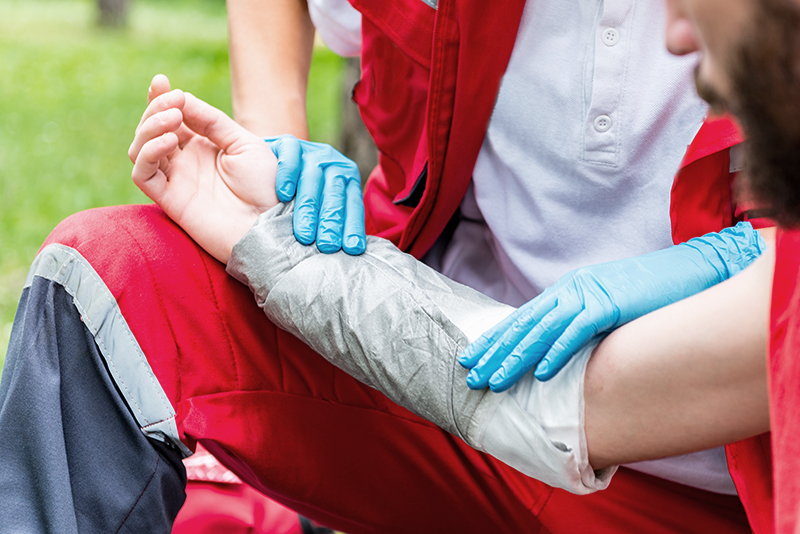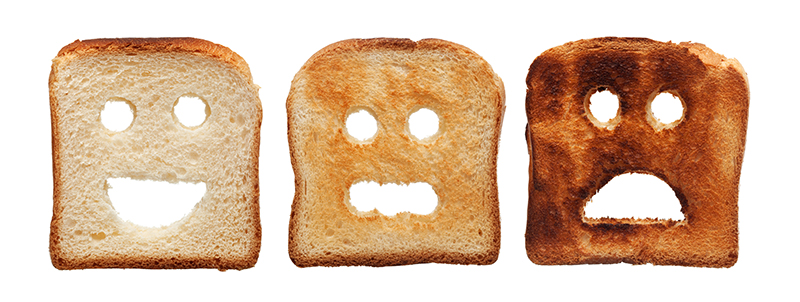Caring for burn victims, helping alleviate the severity of their pain as quickly as possible, is our goal. Utilizing recognized innovative treatment methods, our medical specialists and team of multi-disciplined professionals are ready to take care of patients suffering from various causes, such as:
- Fire or burning.
- Scalded by hot water.
- Electrocution or lightning strike.
- Effects of hot gases inhalation.
- Effects of dangerous chemicals.
Burns
Burns describe injuries to the skin or body tissues – on the surface or deeper – that is damaged by very high heat, electric current, radiation, or chemicals.
Severity of the injury depends on
- The temperature – the higher the temperature, the greater the severity.
- Contact time – at a given temperature, the length of contact time will determine the severity.

The Degree of Burns
- First Degree: Least severity where the injury is at the epidermal level only. Skin around the wound is reddish and painful, sore to the touch but is not blistered. This type of would heals within 3 – 5 days without any scarring.
- Second Degree: Parts of the skin structure are still intact, and the body can repair the damage on its own. There are 2 types of the injury:
- Superficial Partial – Thickness: Injury occurs to the epidermis and upper layer of the dermis and causes reddish blisters which is soft but painful to the touch. It takes about 2 weeks to heal and generally does not leave a scar.
- Deep Partial – Thickness: Trauma is deep into the reticular dermis level. The resulted blisters are thick but split easily. There is a slight chance of scarring, but not much if the wound is not infected. The injury should heal within 3 – 6 weeks.
- Third Degree (Full Thickness): All layers of the skin (epidermis, dermis, and hypodermis) as well as capillaries in the hypodermis layer are damaged. The skin is pale in color and only slightly painful. Skin grafting is used to treat this type of injury, except when it is less than 1 cm.
- Fourth Degree: The injury is deeper through the skin tissues, down to the muscle layer. The wound needs to be cleansed and dressed. Any damage below the skin has to be treated.
- Fifth Degree: The injury occurs through the skin and muscle layers, all the way to the bone. The wound needs to be cleansed and dressed. Any damage below the skin has to be treated.

Determining the Depth of Burns
- Minor Burns
The burns cover less than 5 – 10% of the entire body, but are not around the face, hands, feet, buttocks, perineum, or genitals; nor are they around major joints areas – such as knees, hips, etc. Importantly, the wounds must not encircle the torso or a limb (e.g., an arm, etc.). This type of injury can be treated as an outpatient case, and can continue until the wounds are fully healed. The severity is between First and Second Degrees burns. - Major Burns
The burns cover more than 10 – 20% of the body, or it is deeper than 2%. For children less than 10 and adults over 50 years old, if the wound is more than 10%, it is considered major burns. For others (10 – 50 years old), if the injury is more than 20% with wounds around the face, hands, or feet areas; or wrapped around wrists or ankles – even if is not very severe – it is considered major burns. The wounds are dressed until they heal and, as prescribed by the specialist, skin grafting can be added.
The most severe burns injury is when the damage covers more than 20% of the body.
- Toxic gas inhalation
- Electrocuted by greater than 500 V current
- Severe injury from chemicals
- Patient is more than 65 years old
Description of Burns Injury
- Minor Burns: Skin turns reddish but is not blistered. The patient feels pain or burning sensation over the wound. It is important to avoid infection of the wound.
- Major Burns: The trauma is deep and can reach the subcutaneous or muscle levels. The wound is pale in color and not painful. This is because the sensory nerve resides around the skin has been damaged due to the injury, so the patient does not feel pain.
Treatment Objectives
- Control blood circulation
- Remove contaminant to prevent infection
- Remove dead flesh and pus
- Adjust the surrounding to encourage healing (e.g., temperature, moisture, acidity or alkalinity)
- Stimulate granulation tissue and skin growth
- Protect the wound (from knocks, germs, etc.)

Wounds Dressing
Week #1
- Daily close assessment by a specialist
- Wounds cleansing with topical antibiotic, such as Silver Sulfadiazine Cream.
- Protect and treat minor wounds against infection
Week #2 onwards
- Close assessment by a specialist every 2 – 4 days
- Bandage with silver and foam components
- Bandage of alginate or hydrofiber type.
- Bandage for noninfected wounds (e.g., foam, low adherents with gauze, etc.)


